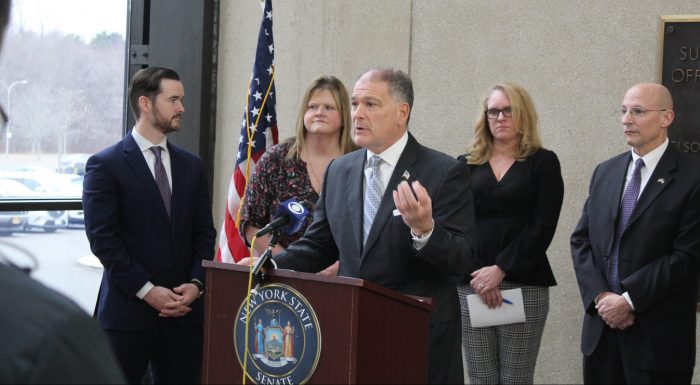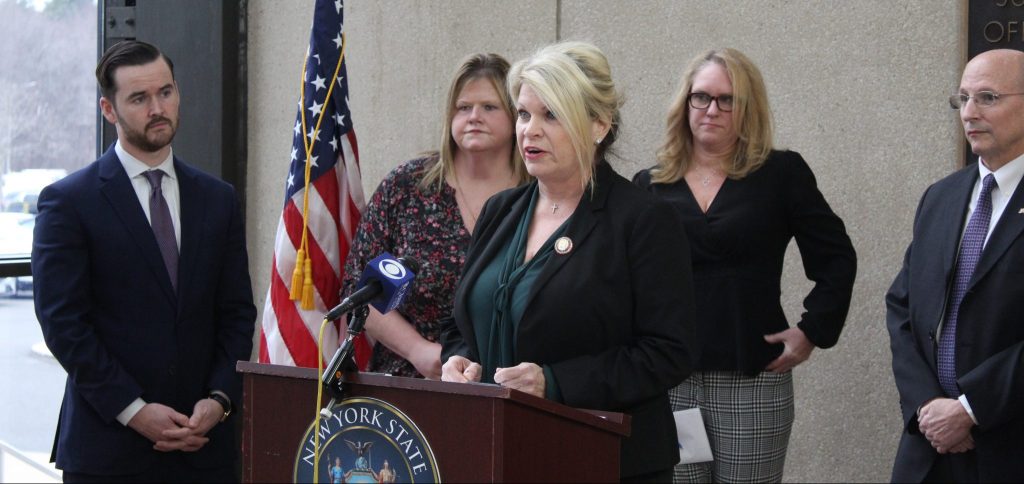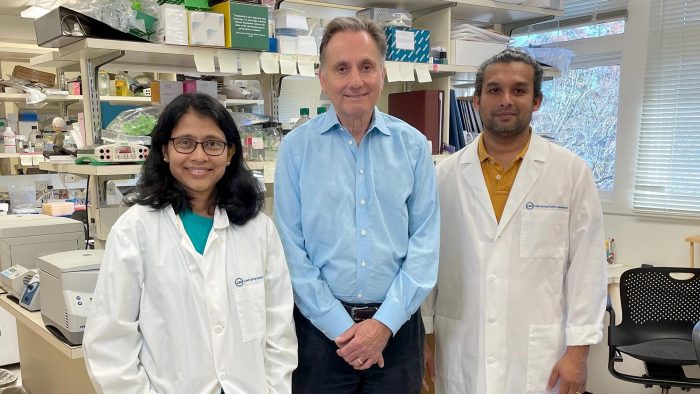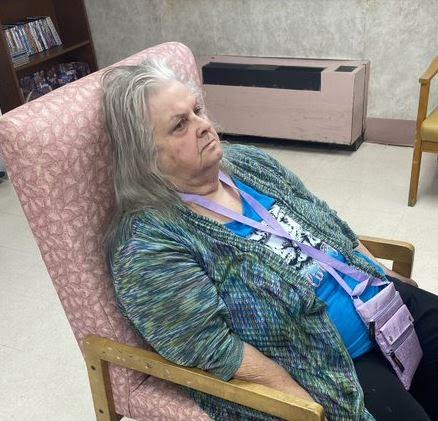Merry Christmas, Happy Hanukkah and Happy Kwanzaa! The entire staff at TBR News Media wishes our readers a wonderful holiday! Please note the office will be closed Dec. 23 to Jan. 3, 2023.
Huntington Station man sentenced for attempted kidnapping
Suffolk County District Attorney Raymond A. Tierney announced on Dec. 23 that defendant Kenyonne Fleurinay of Huntington Station was sentenced to 13 years in prison after pleading guilty in September to Attempted Kidnapping in the Second Degree and then failing to voluntarily return to court for sentence.
“Not only did this defendant violently abduct a person that he should have cared for, but he was brazen enough to abscond from court and commit another felony while on the run,” said District Attorney Tierney. “This defendant’s actions have earned him a significant sentence.”
On March 6, 2022, Fleurinay, 23, abducted his 20-year-old girlfriend from America’s Best Value Inn in Smithtown following an argument, and drove her against her will into Brooklyn, New York. Surveillance video from a gas station in Melville captured the victim twice attempt to flee from Fleurinay’s car and Fleurinay twice violently throw the victim back into the vehicle. While driving from Suffolk to Kings County, Fleurinay repeatedly whipped the victim about her body with a phone charger. During the abduction, the victim’s mother contacted the defendant and pleaded with him to return her daughter until he ultimately drove her back to Suffolk County, where he was apprehended by the Suffolk County Police Department.
Fleurinay, pleaded guilty on September 9, 2022, to Attempted Kidnapping in the Second Degree, a Class C violent felony, before Supreme Court Justice, the Honorable John B. Collins. He was scheduled to be sentenced on September 23, 2022. However, Fleurinay failed to return to court for sentence and a warrant was issued for his immediate arrest. On October 30, 2022, he was arrested by the Nassau County Police Department for Criminal Possession of a Controlled Substance in the Third Degree, a Class B felony, and was returned to Suffolk County to face sentencing on this charge. Fleurinay was sentenced to 13 years in prison followed by 5 years post release supervision.
Criminal complaints and indictments are merely accusatory instruments.
Defendants are presumed innocent until proven guilty. No one is above the law.
GOP officials, advocates press Gov. Hochul for additional child care appropriations

In an effort to influence the upcoming state budget, Republican officials in the New York State Legislature joined policy advocates at the Perry B. Duryea State Office Building in Hauppauge Thursday, Dec. 15.
The officials called the press event to raise public awareness about the lack of child care services on Long Island, hoping to pressure Gov. Kathy Hochul (D), who is preparing the state budget for the 2024 fiscal year.
Child care on Long Island “is not a problem, it’s a crisis,” said Dean Murray, state Sen.-elect (R-East Patchogue), who organized the event. “We are at a crisis level on Long Island when it comes to child care, and there is no simple solution.”
Murray regarded the issues associated with child care as threefold. For him, the state government can remedy the problem by addressing its affordability, availability and accessibility.
While Murray applauded Hochul and the Legislature for targeting the issue in last year’s budget, he said the changes do not adequately account for regional economic differences throughout the state.
“The cost of living here on Long Island does not compare to areas upstate,” he said, “So when you have a statewide standard, it simply isn’t fair to regions like Long Island.”
He added that the child care is underfunded, arguing, “We need to do what we can as a government to help to create more availability, helping to build more facilities, helping to encourage employers to offer on-site child care.”
The state senator-elect regarded child care service as “a profession, not a job.” However, he said these professionals are often underpaid.
“Can you think of a job that’s more important than caring for our kids?” he said. “This is a professional job. [The workers] need to be treated as such, and they need to be compensated as such.”
State Sen. Mario Mattera (R-St. James) explained the problem similarly. He detailed the underinvestment in child care personnel, saying the incentive is to pursue other industries.
“The people right now with child care are leaving because they’re getting other jobs,” Mattera said. “They’re getting better [paying] jobs even in McDonald’s. That’s a problem.” He added, “They are watching our kids and protecting our children, but they’re not getting paid properly.”
Mattera also addressed the need for more child care training programs. If child care is to be a profession, he said these service providers deserve similar specialized teaching to those of other fields.
“We need to educate,” the state senator said. “We need to make sure [institutions] like Suffolk Community College, a perfect example, have some kind of a course … to have qualified people watching our children.”
Jennifer Rojas, executive director of the Commack-based Child Care Council of Suffolk, discussed the adverse effects of the COVID-19 pandemic on the child care industry. While these essential services remained operational throughout the public health emergency, the industry has struggled since.
“When everything shut down in March of 2020, child care remained open because we knew how important it was for our essential workers to continue to work,” she said. “Unfortunately, our industry is in a crisis. … It’s expensive for parents, and the workforce is making poverty wages.”
She added, “It’s because you cannot raise the cost on parents in order to pay your staff more, so we’re stuck in this bubble where providers are not able to pay their staff and, therefore, not able to recruit.”
Without sufficient staff, Rojas said some child care programs are cutting back resources and, in some instances, shutting down altogether. “This is a crisis like we have never seen in this industry, and it’s always been an industry that has operated on razor-thin margins,” she added.

State Assemblywoman Jodi Giglio (R-Riverhead) echoed Rojas’ sentiments about the crippling effects of COVID-19 on child care service providers. To Giglio, the lockdowns generated conditions where child care was less necessary for parents.
“Because the moms couldn’t go to work and everybody was expected to stay home, a lot of these facilities closed down,” she said. “It costs a lot because your payroll is not going down and you’re still turning the lights on every day.”
Also in attendance was Ryan Stanton, executive director of the Long Island Federation of Labor, who emphasized the inordinate expenses associated with child care and the need for state support.
“In both Nassau and Suffolk counties, the cost of care is about $30,000 a year,” he said. “That is more than going to the State University of New York for an entire year. You have working families struggling to make ends meet. In order to go to work, [they] must have care in many instances. And we’re asking them to pay for a college tuition bill or more.”
Giglio, a member of the state Assembly’s Labor and Economic Development committees, suggested funding child care to remediate labor shortages, viewing such an investment as an economic development tool.
“We have warehouses out there that are full of materials, waiting to be delivered to customers, and those items are not getting delivered because they don’t have the drivers,” she said. “We need to get people back to work. Employers are looking for workers, and parents are looking for a better life for their families.”
Concluding the press conference, Murray outlined some possible solutions. He recommended removing the statewide eligibility standard to resolve the regional economic differences between Long Island and the rest of the state.
“Because of our economic diversity here, [the statewide standard] doesn’t serve Long Island like it should,” the state senator-elect said. “Rather than a statewide eligibility level, we should break it into the 10 regional economic development council regions.”
With different standards for different regions, Murray maintained that Long Islanders could qualify for additional state aid for child care, reflective of their higher cost of living. “This is a fairer way, especially for Long Island families,” he said.
Murray said another way to improve the issue is through employer-based on-site child care. He offered that expanding these benefits could assist working families and employers alike.
Speaking to employers directly, he said, “If you offer on-site child care as a benefit to your employees, I guarantee you that will put you above your competition in the game of recruitment,” adding, “What we want to do is incentivize that.”
Lastly, he suggested exploring any changes in state regulations that may be holding up the construction of new child care facilities. “We also need to sit down and look at whether or not there are regulations slowing down the building of health care facilities,” Murray said.
He added, “Let me be very clear: We will never change any regulations that deal with the health, the safety or the well-being of the children. But we should take a look at the regulations otherwise and see if they are slowing them down.”
Hochul is expected to release her proposed FY 2024 budget next month.
Celebrating the holidays amid health risks from the ‘tridemic’

Around this time of year, parking lots are often full.
That’s true of the mall parking lot, as people go out to shop for holiday gifts for their friends and family, but it’s also true, especially this year, for hospitals and urgent care centers.
With the so-called “tridemic,” which is a combination of viruses that typically affect the lungs, including COVID-19, the flu and respiratory syncytial virus (or RSV), infecting people of all ages, the need for health care and medical attention has been high in the weeks leading up to the holidays.
When Dr. Sharon Nachman, chief of the Division of Pediatric Infectious Diseases at Stony Brook Children’s Hospital, arrives at work at 7 a.m., she drives past urgent center parking lots that are “full for a reason. It’s because people are sick” and need medical attention at the start of the day.
Indeed, the combination of the three viruses, as well as other viruses and bacteria in the community such as adenovirus and enterovirus, has made it difficult for some children to attend schools and for adults to go to work.
For the week ending Dec. 10, which is the most recent period for which data is available, Suffolk County reported 3,936 cases of the flu, which is up 35% just from the prior week. The week ending Dec. 10 alone represents more than half of all flu cases for the entire 2019-2020 season, according to data from the New York State Department of Health.
At the same time, COVID and RSV numbers have climbed.
“We almost doubled our COVID census over the last three to four weeks,” Dr. Michael Khlat, chief medical officer at St. Catherine of Siena Hospital in Smithtown, explained in an email. St. Catherine currently has almost 60 COVID-positive patients. Nearly a third of those patients are admitted for COVID and are receiving intravenous remdesivir, while the others are incidental findings in the context of other medical needs.
“What is special about this surge is that it is inclusive of COVID, influenza, rhinovirus as well as RSV,” Khlat wrote. “The symptoms are very similar, and treatments are all supportive at this time.”
Family gatherings at Thanksgiving contributed to the increase, adding “extra turbocharging to the current respiratory viruses,” Nachman said.
The most vulnerable patients are the immunocompromised, patients with diabetes, chronic lung and cardiac disease, obese residents and patients with chronic liver and kidney disease, Khlat added.
Demand for beds
The influx of patients has meant that St. Catherine has had to increase its capacity of staffing using nursing agencies to meet the needs of the community for “seamless, high-quality care,” Khlat explained.
St. Catherine has also added more providers on the medical wards to care for patients and has load balanced patients with their Catholic services partner St. Charles Hospital and other Catholic Health facilities.
Nachman urged residents to see their primary care doctor if they have routine viral symptoms. Coming directly to the emergency room slows the process of delivering urgent care.
To be sure, Nachman urged anyone with chest pains or stroke-like symptoms should head directly to the emergency room.
Nachman said Stony Brook Children’s Hospital is transitioning to a model in which they triage patients who walk into the ER to assess the need for services.
As people prepare for family gatherings, Nachman suggested that they evaluate the risks of interacting with others.
People with an immune deficiency might want to wear masks or speak outside with others, particularly if someone in the group had one of the respiratory viruses.
Viruses like RSV are generally contagious for about three to eight days, according to the Centers for Disease Control and Prevention.
RSV spreads through close contact, which means that passing someone in a supermarket won’t likely spread the virus, while sitting and doing homework or eating a meal next to someone could.
As for COVID, Nachman continued to urge people to get the bivalent booster shot.
Every study, she said, shows that the booster drastically reduces the risk of being hospitalized with COVID.
Editorial: Long Islanders need child care assistance
We often think of our country as the greatest in the world. In many ways, it is, but we are falling behind other first-world countries regarding health care costs, life expectancy, high-speed transportation and more.
Among our country’s greatest weaknesses is a lack of affordable child care options for parents.
Local Republican elected officials recently held a press conference on Thursday, Dec. 15, to raise awareness about this important issue.
Their mission was to implore New York State Gov. Kathy Hochul (D) to include increased aid for child care services in the 2024 state budget. Hochul’s budget is still in its early stages and is expected to be released next month.
While the issue was addressed to an extent in last year’s budget, the elected officials said more needs to be done. Their plea is for the governor to consider how the cost of living varies throughout the state, with Long Islanders spending more than many of their fellow New Yorkers.
For these reasons, a statewide child care eligibility level makes little sense for Long Islanders. If the statewide standard is not amended to reflect these differences, more people will flee this Island for more affordable regions of the state and nation.
In New York, more funding and incentives are needed to make child care more accessible for working parents, including building more facilities and encouraging employers to offer on-site options. We are seeing the exact opposite take place within our region, with many child care facilities cutting back their services or closing shop altogether.
The low salaries of those working in the industry also need to be corrected. Many are making minimum wage or close to it. It’s inexcusable that those responsible for taking care of children are paid so poorly that they can make the same or more while working for a fast-food restaurant or retailer.
The onset of the pandemic demonstrated how vital child care is to families. While many worked from home, those deemed essential workers, such as people in the medical, emergency, media and food industry fields, could work on-site. Child care facilities remaining open for these workers enabled them to continue providing residents with necessary vital services.
At the same time, many businesses deemed nonessential were shut down. With employees working from home, child care services experienced a drop-off in enrollment. The result was a decrease in cash flow, creating financial burdens on many facilities and several shutting their doors for good.
In addition to helping families afford these services, it’s imperative that our child care providers and professionals receive the financial support they need to open centers and keep them open with properly paid staff members. These are all serious red flags for our regional economy.
On-site day care is more than babysitting. The benefits of attending a child care center include improved social-emotional skills and children who are better prepared for elementary school.
The need for more child care assistance for Long Islanders should be a nonpartisan issue, something every elected official should be rallying for in the near future. We hope to see more public leaders speak up about the need and get behind any legislation to improve child care in our state.
The financial stability of New Yorkers — and most importantly, our children’s futures — depend on it.
UPDATE: Silver alert issued for missing Huntington Station woman
UPDATE: Barbara Buckmann has been located, unharmed.
Suffolk County Police have issued a Silver Alert for a missing Huntington Station woman who suffers from dementia.
Barbara Buckmann, 77, was last seen leaving her residence at the Manorhaven Adult Home, located at 222 Columbia Street in Huntington Station on Thursday, Dec. 22 at 6 p.m.
Buckmann is white, 5 feet 2 inches tall, 220 pounds with grey hair and blue eyes. She was last seen wearing a white sweater and navy blue sweatpants.
Detectives are asking anyone with information on Buckmann’s location to call 911 or Second Squad detectives at 631-854-8252.
Silver Alert is a program implemented in Suffolk County that allows local law enforcement to share information with media outlets about individuals with special needs who have been reported missing.
Close games turns into a rout for Smithtown West Bulls
A malfunctioning fire alarm caused a 48-minute delay in the middle of the third quarter of the Smithtown West vs. Northport boys basketball game on Saturday.
A close game before the stoppage turned into a rout for the Bulls, as they won 68-41. Northport was ahead 31-27 at halftime and were down by only four with 3:07 left in the third quarter when the alarm bells began to sound.
Smithtown West exploded with 31-8 after play resumed, including an 11-0 run to end the third quarter.
This was a part of a 19-2 run that spanned the end of the first half to the opening minutes of the fourth quarter.
Jack Melore scored 26, including 4 three pointers, for the Bulls who remain undefeated at 5-0. Center Patrick Burke had 18 points, 9 rebounds and 4 blocks for West. Northport’s Andrew Miller scored 18 points, 14 in the first half, as the Tigers dropped their first game of the year and are 4-1. Brendan Carr had 8 points and Emmett Radziul had 6 for Northport.
As for the delay, first responders from Hauppauge and Central Islip were on the scene within minutes and approximately a dozen fully-uniformed firefighters investigated the premises accompanied by Smithtown Central School District officials. It was determined that a faulty smoke detector caused the alarm — the second time in a week such a situation had occurred.
According to SCSD Director of Facilities Dan Leddy, the fire alert system for the entire district is currently being modernized with Smithtown West High School the first building to have a new fire safety monitoring system installed. This work should be completed district-wide before the end of the 2022-23 school year.
In exploring cancer, CSHL’s Spector and postdocs make heart discoveries

By Daniel Dunaief
One came from India, the other from Sri Lanka. After they each earned their PhD’s, they arrived on Long Island within seven months of each other about seven years ago, joining a lab dedicated to studying and understanding cancer. Each of them, working on separate projects, made discoveries that may aid in the battle against heart disease.
Working for principal investigator David Spector at Cold Spring Harbor Laboratory, postdoctoral fellow Rasmani Hazra, who grew up in Burdwan, India, found a link between a gene that affects cancer in mice that also can lead to a problem with the development of heart valves.
Hazra worked with two long noncoding RNAs that are highly expressed in mouse embryonic stem cells, which have the ability to differentiate into many different types of cells.
Specifically, she found that mice that didn’t have Platr4 developed heart-related problems, particularly with their valves.
At the same time, postdoctoral fellow Gayan Balasooriya, who was born and raised in Sri Lanka, discovered that a single, non-sex gene is governed by different epigenetic mechanisms based on whether the gene is inherited from the mom or the dad.
While it was known that males are more susceptible to heart disease than females, researchers did not know which copy of the gene related to those diseases are expressed. This discovery could help in understanding the development of heart defects.
“Although we ended up at heart development” in both of these published studies, “we didn’t initiate” looking for heart-related information, said Spector. “The science led us there.
Spector, however, expects that the lessons learned about differentiation in the context of the developing heart can also “impact out knowledge about tumors” which he hopes will eventually lead to advances in how to treat them.
He added that any clinical benefit from this work would take additional research and time.
An on and off switch
In Hazra’s study, which was published in the journal Developmental Cell, she worked with Platr4 because humans have several possible orthologous genes.
When Platr4 expression, which shuts down after birth, is deleted from cells or embryos, the mice died from heart valve problems.
The human equivalent of Platr4 is located on chromosome 4. At this point, clinical case studies have connected the deletion of this chromosome to cardiac defects in humans.
Hazra said her project initially examined the function of these long non-coding sections of RNA. She was exploring how they affected differentiation. She found this link through in vitro studies and then confirmed the connection in live mice.
Spector explained that this work involved extensive collaborations with other researchers at Cold Spring Harbor Laboratory, including teaming up with researchers who can do electrocardiograms on mice and who can assess blood flow.
A shared mouse imaging resource also helped advance this research.
“One of the advantages of Cold Spring Harbor Laboratory is that we have over 10 shared resources, each of which specializes in sophisticated technologies that scientists can use on their own projects,” he said. Each lab doesn’t have to learn and develop its own version of these skills.
Hazra plans to continue to study other long noncoding RNA. She is also working on glioblastoma, which is a form of brain cancer.
Hazra plans to start her own lab next fall, when she completes her postdoctoral research.
Inactive gene
Balasooriya, meanwhile, published his research in the journal Nature Communications.
He used RNA sequencing to identify numerous genes. He also looked at whether the RNAs originated from the mom or dad’s genes in individual cells.
Also planning to start his own lab next fall, Balasooriya found changes that alter gene expression between the alleles from the mother and the father experimentally and through data mining approaches.
“What was most surprising in my studies is that [he identified] the gene from the father’s side and the mother’s side are regulated in a different manner,” Balasooriya said. “I’m interested in following up on that finding.”
The next step for him is to look not only at the heart, but, more broadly, at how monoallelic gene expression changes the way regulators affect development and disease.
“I want to do a deep dive to find out the mechanisms” involved in this expression of a single copy of the gene, Balasooriya said, which could provide ways to understand how to control the process.
In the long run, this kind of research could provide insights into ways to treat heart disease as well as other diseases like cancer and immune diseases.
Growing up in the North Western Province in Sri Lanka, Balasooriya was interested in math and science. After he finished his bachelor’s degree in biology in Sri Lanka, he earned a master’s in molecular biology at the University of Hertfordshire in England. He “got so excited about biology and exploring new fields” that he decided to pursue his PhD at the University of Cambridge, England.
After college, he worked in computer science for a while and realized he was not passionate about it, which encouraged him to do his master’s. The experience in computer science helped him with bioinformatics.
As for Spector, he is pleased with the work of both of his postdoctoral researchers. “This is what being a principal investigator is all about, having young people join your lab, sitting down with them, discussing a potential project, not really knowing where it’s going to go,” he said.
He described both members of his team as “extremely successful” who were able to make discoveries that they shared in prestigious journals. Balasooriya and Hazra both laid the groundwork to go and start their own careers.
“Seeing the fruits of their work is the most rewarding experience” as the leader of a lab, Spector said.
D. None of the Above: Elon Musk and the Twitter factory
By Daniel Dunaief

Our story begins some time around now. No, there’s no chocolate, despite the season, and there’s no meadow where everything is edible.
No, our modern-day story begins where so much of us live these days, online.
You see, a famous and once marvelous company called Twitter is run by an eccentric, wealthy and successful businessman named Elon Musk, who somehow figured out how to create and mass produce electric cars that require no gas and that sound like spaceships.
Musk has decided, after many hours of running Twitter, that he needs to find a successor.
So, borrowing a page from Willy Wonka, he provides invitations that cost 3 cents per tweet to enter a sweepstakes.
When he narrows the field down to those who get the golden tweet, he plans to invite a group of five people to come to a virtual, top secret Twitter tour.
A few people try to make fake tickets, but the ever vigilant Musk spots the fraud. Day after day, people wait until, finally, five people, some of whom have never tweeted in their lives, have a chance to run the company.
Musk appears on screen wearing a top hat and a menacing smile. He demands that no one record what they see or take a screenshot of the secrets he is prepared to share.
Each person has a tiny image — about 1/4 the size of Musk’s — as they virtually walk through a factory floor.
On the first stop, Musk invites them to join him in the secret Hunter Biden/ New York Post room. Ah, yes, the story about the infamous laptop, which will undoubtedly become a part of an extensive investigation into the Biden progeny, is in this room.
“Don’t try to read anything!” he snaps.
But, of course, one of the contestants can’t resist. With a special tool that tracks eye movements, Musk knows that contestant No. 1, who is chewing gum constantly, is trying to decipher all the information. Her screen develops a horrible virus that turns it (and her entire computer) purple.
“You see?” he says, shaking his virtual head at the other small characters. “That’s what you get when you don’t listen. Oh, look, here they come now.”
Wearing virtual clothing embroidered with the Tesla logo, a modern day group of Oompa-Loompas appears on screen.
“Oompa, loompa, doompa dee do.
I’ve got another riddle for you.
Oompa loompa, doompa dee dee
if you are wise, you’ll listen to me.
What do you get when you don’t listen to Musk?
A virus on your computer that will kill it before dusk.
Who do you think should have the last laugh?
It certainly won’t be you or your staff.
Take a moment to ponder this fact,
Running Twitter may take too much tact.”
“Well,” Musk interrupts, waving away the virtual characters. “That’s enough of that. Now, let’s go for a virtual boat ride.”
In everyone steps as a boat careens through a choppy river, passing one door after another, with the names of celebrities who have been suspended hanging from each virtual room.
The boat stops near an embankment. The Musk character invites his guests to look at some special doors.
When he turns around, his virtual eyes widen in shock, his lower jaw drops down to his knees, and he hunches his shoulders.
“How? What? Wait, what’s going on?” he stammers, looking closely at the faces of his remaining four contestants.
Sure enough, on screen, Musk recognizes that two of the faces are the same as his, while the other two look like versions of Donald Trump.
“No, but, I made this game,” he whines. “How will we find out who wins?”
“Ah,” one of the Trumps says. “For that, you’ll have to tune into the sequel, which will only cost $99 and will become a collector’s item in no time.”
Between You and Me: This holiday season starts the path to peace with Viva la Difference!
By Leah S. Dunaief

Peace. That is what religions ask for, what billions of people across all nations pray for. Why in our family of humanity is that goal so elusive?
Perhaps this is a question only for theologians and philosophers to answer. But now, in this glorious holiday season, when we speak and sing of Peace on Earth, we all articulate the ideal.
Many seek, and indeed can find inner peace. But the dream of peace, the kind of peace that is defined as lack of conflict and freedom from fear of violence between individuals and groups, has never been achieved.
When will there be such peace?
The answer, it seems, is when all humans are of good will.
And what does that involve?
For starters, it requires acceptance and respect for the “other.” We need to see each other as humans with the same ambitions and desires and feelings. Rather than look down on and despise people who are simply different, we can be intrigued and interested in those differences and therefore in those who are different.
We can invite into our world those who are different from us in the way of skin color or appearance or beliefs. And if we can do so, we can see them as humans, just like us, and bigotry cannot exist. For we cannot look down on ourselves. If we are to do so, starting now, racism and antisemitism and every other sort of hatred of our neighbors disappears.
For there to be Peace on Earth, it must start with accepting the stranger, the “other” among us.










